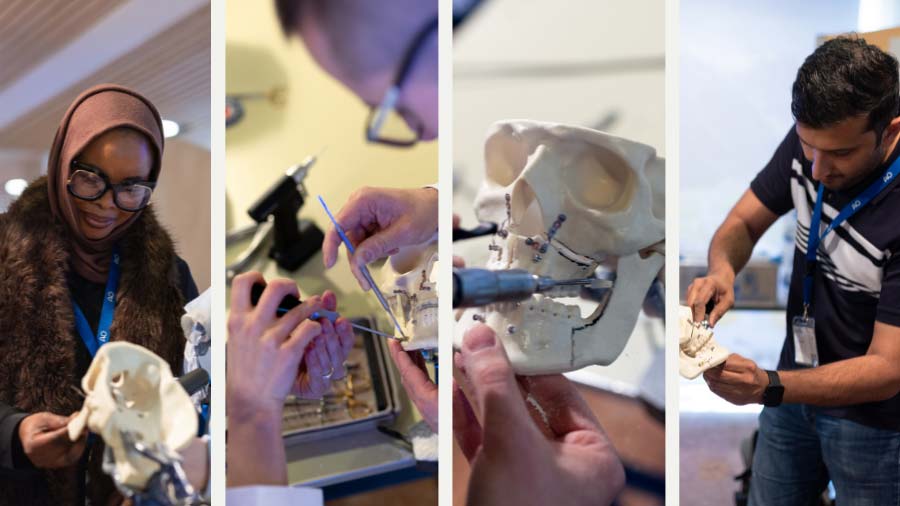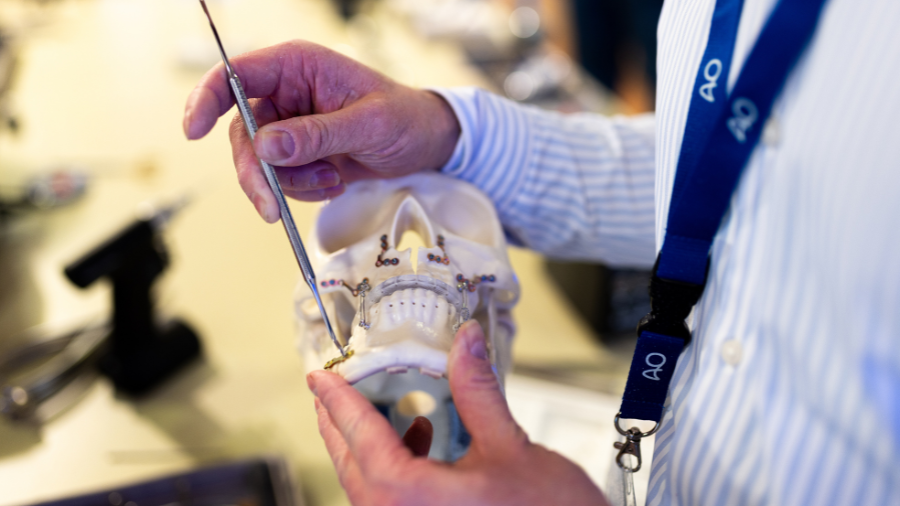AO CMF’s new orthognathic surgery curriculum—tailored to regional needs—debuts
Insights from the faculty

The new AO CMF Course—Orthognathic Management of Facial Deformities directly answers the global craniomaxillofacial (CMF) surgeon community’s demand for state-of-the-art orthognathic surgery education. AO CMF Education Commission Chairperson Stefano Fusetti and course cochairperson Nicolas Homsi explained exactly how.
The two-day course is designed for residents, qualified surgeons, and orthodontists who are developing their practice in the field of orthognathic surgery. It includes all up-to-date technologies, particularly surgical planning, as well as traditional planning because the most current technologies are not always available everywhere in the world. In this regard, the new course is unique compared to other available courses, Fusetti said.
“In many countries around the world, trauma cases are decreasing significantly. The trend is more requests by patients about orthognathic surgery, particularly in Europe, North America, Latin America, and some Asian countries,” Fusetti explained, noting that the course was sold out at its global debut at the AO Davos Courses 2024 in December, reflecting the demand for orthognathic surgery education. “AO CMF always designs courses based on surgeons’ needs, so we were motivated to develop a formal orthognathic surgery curriculum.”
Additionally, he pointed out, the new curriculum—part of the AO Competency-Based Curriculum—dovetails perfectly with the increased use of technologies in surgery.
Meeting patients’ expectations
Meeting patients’ high expectations and—despite evolutions in technology—predictability are among the biggest challenges surgeons encounter when managing facial deformities.
“The typical patient requesting orthognathic surgery has a very high cosmetic demand and very high expectations,” said Fusetti. “As a global organization, the AO needs to adapt the facial analysis and the specific surgical treatments to different ethnic groups across the world.”
“Predictability is always a challenge,” Homsi added. “Despite technical evolution of planning software, computer-aided design/computer-aided manufacturing (CAD/CAM) technologies, customized implants, diagnostics, facial analysis, and surgery still depend on the surgeons’ capacity.”
Establishing a pathway
As the entry-level step in the educational pathway established by the new curriculum, the AO CMF Course—Orthognathic Management of Facial Deformities addresses those challenges by harnessing technological innovations to help surgeons achieve better outcomes.
“It goes from the simple analysis of the face and the occlusion to the reasoning behind surgical planning using current technologies and then the treatment plan, including the options currently available to surgeons for a standard case,” Fusetti said.
Highly interactive learning experience
In addition to employing current technologies, Homsi emphasized that the curriculum covers diagnosis as a basic principle of treatment. Treatment options and decision-making are reinforced and critically discussed in small group discussions.
“Despite practical exercises, having the opportunity to discuss face-to-face in small groups during skills labs is of great importance,” Homsi said.
Designed to allow a high degree of interaction between participants and faculty, new course is unique in that it’s open to orthodontists interested in developing their practices to include orthognathic surgery. Preceding the two-day, face-to-face, on-site learning experience are six to eight hours of pre-course online activities, including:
- Readings, archived webinars, prerecorded presentations, and videos (approaches on clinical or anatomical specimens) and step-by-step videos of the techniques for both Le Fort I and bilateral sagittal split osteotomy (BSSO) procedures on dry bone model with animations)
- AO Surgery Reference procedures and myAO case forum (learners post questions in an online forum)
- Live, two-hour, online digital planning exercise session
- Pre-course self-assessment.
During the face-to-face portion of the course, participants will hear lectures from AO CMF renowned faculty and take part in practical exercises, a skills lab, and small group discussions.
Looking to the future
There’s good news for surgeons who were unable to take part in the curriculum’s debut at the AO Davos Courses 2024: Global rollout will continue in Europe in 2025 and worldwide in 2026.
With the new curriculum, AO CMF underscores its leadership as a multispecialty group of surgeons working together to improve patient care through education and research and development opportunities for surgeons.
“In the future, there will be much more technology available to surgeons, including various means of data acquisition—photography, scanning, computed tomography (CT)—and a lot more use of 3D printing in different materials, with much more customized patients solutions in orthognathic surgery,” Fusetti predicted.
Already in the AO CMF pipeline is a new curriculum focused on facial gender affirmation surgery.
“Orthognathic surgery will be quite a significant part of this new curriculum,” Fusetti said.

.png?rev=b21ac33735a64efbb5bd16621f4a93d3)
.png?rev=735208e08f4846a39621c0180b8d8e55)
